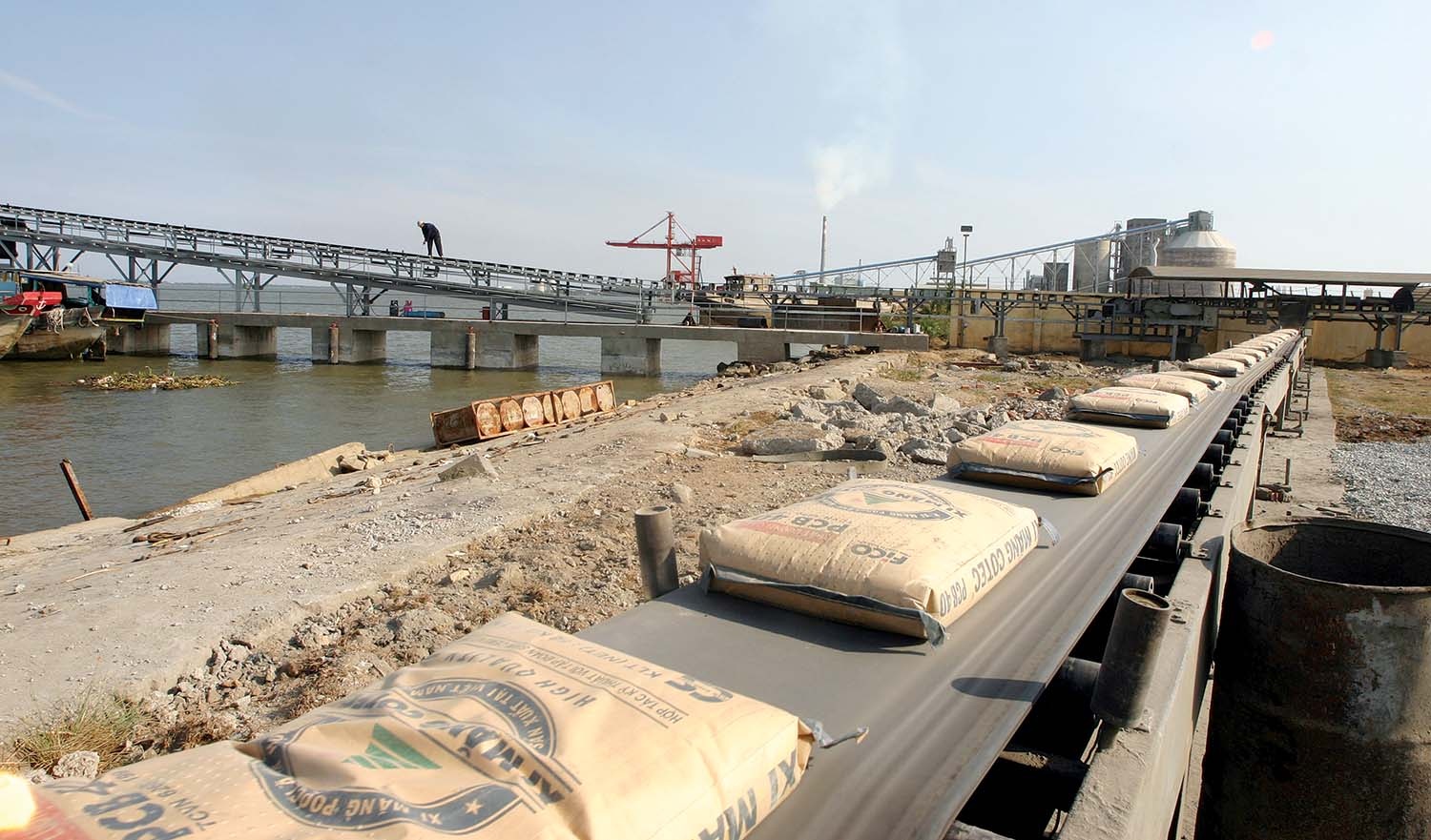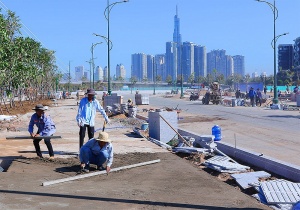Seeking way out of cement oversupply
In late June, the Ministry of Construction (MoC) sent a proposal to the prime minister asking for its permission to work on resuming the cement sector planning.
 |
“Cement oversupply has become increasingly critical, as the sector planning did not exist for around six years. Currently, for cement projects, localities submit projects and seek approval directly from the prime minister. It proves imperative to resume the cement sector planning and licence cement projects,” said Nguyen Quang Cung, chairman of the Vietnam National Cement Association (VNCA).
In fact, in 2017 upon enforcement, the Law on Planning removed the planning of diverse products, including cement. Since then, the ventures into cement projects have followed investment regulations.
The latest report by the VNCA shows that Vietnam is currently home to 92 cement production lines with a total capacity surpassing 120 million tons per year.
Last year, total cement and clinker production output approximated 92.9 million tonnes, with cement production lines running at an average 75 per cent of their total designed capacity.
Total cement consumption volume just approximated 87.8 million tonnes, equal to 88 per cent of 2022 volume, of which domestic consumption shed to a critical low level of below 60 million tonnes, and export was curtailed to nearly 30 million tonnes.
According to the MoC, currently, there is a huge pressure from redundant clinker production capacity at approximately 50 million tonnes per year amid slow construction pace. This could put a burden on the economy. Many producers could go bust, unless suitable measures are promptly presented.
At the meeting to find solutions to building materials sectors in mid-June, on behalf of cement businesses, Le Nam Khanh, CEO of state-run Vietnam Cement Industry Corporation (Vicem) proposed the prime minister did not to entice both domestic and foreign investment into cement production to relieve pressure on the cement sector.
Khanh noted that within the past three years, local consumption just came to around 60 million tonnes, meanwhile the sector’s actual capacity has surpassed 120 million tonnes.
Having 10 member units under management, Vicem reported that in its 120-year development history, never before has the cement sector fallen into such a critical stage.
“Several production lines belonging to our system with 10 member units have to temporarily halted operation, incurred low consumption and dwindled incomes. Despite these all, we commit to not selling products below the production cost,” said Nguyen Thanh Tung, deputy CEO of Vicem.
The VNCA statistics showed that in the first half of this year, both cement production and consumption didn’t show improvements compared to last year.
Total production output came to around 44 million tonnes, equal to last year’s similar period, and consumption was nearly this volume. Cement factories just run at 70-75 per cent of their designed capacity.
 | Cement groups take on tough period Amid unprecedented complexities, cement producers are hoping for breakthroughs in public projects to stimulate demand and accelerate consumption. |
 | Telecoms firms seeking new pastures Some of the leading Vietnamese telecoms firms are seeking new territories for development in the face of diminishing market share, following a report from the Ministry of Information and Communications (MIC) showing that the share of revenue from traditional telecom services is shrinking. |
 | Component makers seeking clarity on incentives Parts suppliers are crying out for clarification through an amended decree that could make it easier for them to access business incentives and save both time and money. |
What the stars mean:
★ Poor ★ ★ Promising ★★★ Good ★★★★ Very good ★★★★★ Exceptional
Related Contents
Latest News
More News
- Sun Group breaks ground on $2 billion Van Don casino complex (December 19, 2025 | 18:14)
- Rare, beautiful, sustainable: the mark of iconic real estate (December 19, 2025 | 08:00)
- Owner-occupied housing stabilises, paving the way for new growth cycle (December 18, 2025 | 17:04)
- Unlocking urban potential of smart cities (December 18, 2025 | 16:50)
- Green finance offers 'passport' for Vietnamese construction, building materials firms (December 15, 2025 | 08:00)
- Gamuda Land commit long-term investment (December 12, 2025 | 11:49)
- HITC ties up with Evolution to develop AI and hyperscale data centres in Vietnam (December 11, 2025 | 12:09)
- Real estate deals boom via high-profile names (December 08, 2025 | 11:32)
- Industrial segment shaped by M&As (December 08, 2025 | 08:00)
- The Privé sets the benchmark for luxury real estate (December 05, 2025 | 08:28)

 Tag:
Tag:



























 Mobile Version
Mobile Version